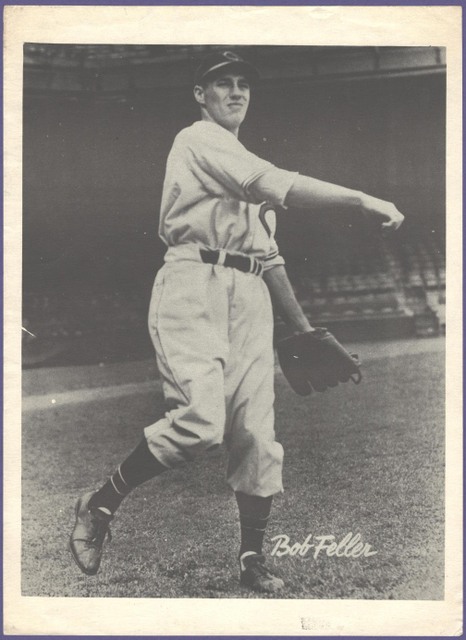Part of the problem with easily analyzing this issue (issues?) is the origin and the assumptions in the conventional nomenclature. Bond Bread didn't make any of these cards, Aarco did. Bond Bread licensed them from Aarco, as is apparent from the many cards, picture packs and photos made from the same images.
Hypothesis #1: Bond Bread
commissioned the 13 card set with back printing because they show up nowhere else in the same format.

We know for sure (thanks to some great research out there) that these were issued starting in 1947 with the card shown above first.
We know for sure that the 44 card rounded corners set was issued in Bond Bread packages.

Hypothesis #2: the set of 44 was NOT commissioned by Bond Bread but was licensed to Bond Bread by Aarco. I base this hypothesis on the existence of so many other issues using the same artwork.
We know for sure that the rectangular cards were issued in boxed sets sometime around 1947-1949.

[autograph not original, but try finding a Feller card w/o an autograph]
We know that the artwork was licensed to Elgee to make the perforated two-sided cards:

We also know for sure that the rounded corner cards were obtained and used by other companies for promotions:


Then there are the 'exhibit' cards:

The glossy photos:

The photo pack premiums printed on paper:

All of which support my hypothesis. Aarco tried to milk its work in a variety of products and deals.
The classification and nomenclature of these various issues was erroneously decided on decades ago by Burdick and the publishers of the early guides based on flawed and incomplete information. Modern research and communication tools have clarified things.
Now, the Festberg cards. I believe that Ted did a disservice to the
catalog raisonne of the hobby by calling the cards Festberg found "impostors". Yes, they are not "Bond Bread" cards. What they appear to be is either new old stock from an Aarco run that wasn't used or rejects from an Aarco print run. The idea of a counterfeit makes little sense, both practically and physically. Practically speaking, at a time when the originals weren't worth much, why even bother reprinting the commons? If you were going to reprint, wouldn't you stick to Robinson, Musial, etc.? And if you did reprint, why not do DiMaggio? Physically speaking, the cards are not re-screens. if you take a halftone print (card) and you don't have the original art and/or the original plates, the only way to reprint mechanically is to re-shoot using the card as the original. The result is a copy of a copy, so to speak, and is visibly different. I've looked at the Festberg cards and the boxed cards side by side and the fronts of the former are not made from re-shoots of the original cards. They are inferior quality, likely due to the card stock not being up to snuff.
Hypothesis #3: the Festberg find was Aarco printed but rejected due to quality issues and was probably inadvertently stored away rather than trashed.